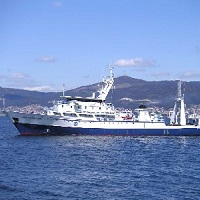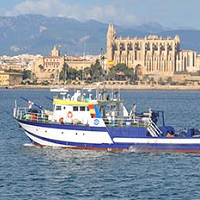Type
series
4107 record(s)
Type of resources
Categories
Topics
INSPIRE themes
Keywords
Contact for the resource
Provided by
Years
Formats
Status
-

Monthly survey to study thermohaline and biological characterization of water masses in the East-North Atlantic.
-

Abundance indices, distribution patterns and faunal assemblages of demersal species in the northern coast of Spain (Atlantic Galician shelf and Cantabrian sea shelf), together with the possible driving factors of their distribution. This survey belongs to the research project: 'Evaluacion de Recursos Demersales por Métodos Directos en el área ICES'. This Project is partly funded by the DCR of the EU and the Education and Science Spanish Ministery.The main objectives of the above mentioned project related with this survey time series are: a) to obtain abundance indices of the main exploited species in the study area; b) to estimate the strength of yearly recruitments of these species and their distribution in the area. c) to study the structure and distribution o the demersal and benthic communities in the area.
-

- El proyecto RADMED-DOS tiene como objetivo general la monitorización multidisciplinar de las aguas de plataforma y talud continental del Mediterráneo, incluyendo tanto el litoral peninsular como las Islas Baleares.
-

OBJETIVOS CIENTIFICOS DE LA CAMPAÑA objetivo principal de la Campaña RadProf0208 es la caracterizacion termohalina y biogeoquimica en las aguas oceanicas de la region Galicia-Cantabrico en tres transectos estandar perpendiculares a la costa en Finisterre, Ortegal y Cabo Mayor (Santander) cubriendo toda la columna de agua hasta unos 5000m de profundidad. Dichos transectos forma parte de la serie temporal de campa?as iniciada en 2003 por la cual se realizan muestreos hidrograficos semestralmente.
-

CINECA II (August-1973)
-

Thermohaline and Biochemical characterization in tree standard transects belonging to Galician-Cantabric Sea waters: Finisterre, Ortegal and Cabo Mayor (Santander), covering the whole water column in every single station.
-

Abundance indices, distribution patterns and faunal assemblages of demersal species in the northern coast of Spain (Atlantic Galician shelf and Cantabrian sea shelf), together with the possible driving factors of their distribution. This survey belongs to the research project: 'Evaluacion de Recursos Demersales por Métodos Directos en el área ICES'. This Project is partly funded by the DCR of the EU and the Education and Science Spanish Ministery.The main objectives of the above mentioned project related with this survey time series are: a) to obtain abundance indices of the main exploited species in the study area; b) to estimate the strength of yearly recruitments of these species and their distribution in the area. c) to study the structure and distribution o the demersal and benthic communities in the area.
-

Estiamtion of the abundance of pelagic fish present in the North-east Atlantic waters in spring which is the spawning period for these fish species, but focussing in sardine and anchovy. Complementary to this main objective the survey design and strategies will allow the enviroment be characterised by recording differente variables (i. e. temperature, salinity, fluorescence, plankton, winds or air temperature) in vertical and horizontal profiles along the surveyed area with no noticeable extra-effort. As it was pointed out, these variables will help the acoustic estimations be improved whilst an extensive environment characterisation at the spawning time will be done. ss
-

Seguimiento de variables oceanográficas (fisico,quimico y biologicas) a lo largo de puntos singulares del litoral mediterraneo español.
-

Influence of oceanographic structure and dinamics on DEmersal populations in waters of the BAlearic Islands
 Catálogo de datos del IEO
Catálogo de datos del IEO